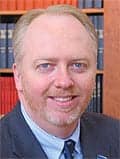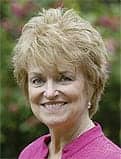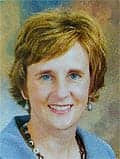A promising technology for those who cannot use conventional implants
The auditory brainstem implant (ABI) is a technology that has been available, in a limited capacity, to adults with hearing loss for a number of years. However, very few children with hearing loss in the United States have received an ABI when other hearing technology has proved unbeneficial. In this examination of a single case of a child with an ABI, the technology has been shown to improve communication and verbal performance, perhaps illustrating a possible wider application of ABIs for similar children.
From the ear horns of the 1600s to modern-day digital hearing aids, amplification technology continues to evolve, resulting in greater access to audition for both children and adults with significant hearing loss. When those with hearing loss receive limited or no benefit from hearing aids, cochlear implantation has become a standard of care. However, when cochlear implantation is contraindicated, most patients resolve to live with their hearing loss without the expectation that a technological solution exists.

|

|

|
| K. Todd Houston, PhD, is an assistant professor of speech-language pathology and director of the Graduate Studies Program in Auditory Learning & Spoken Language at Utah State University, Logan; Susan G. Allen, MED, CED, MEd, CCC-SLP, LSLS Cert AVEd, is director of Clarke Schools for Hearing and Speech/Jacksonville (CSHSJ) in Jacksonville, Fla; and Alisa Demico, MS, CCC-SLP, LSLS Cert AVT, is a speech-language pathologist at CSHSJ. | ||
For children with hearing loss who similarly receive no benefit from hearing aids and are not considered to be candidates for cochlear implantation, parents and caregivers may feel a sense of helplessness. In these situations, choices of communication and hearing technology are limited. While not widely available in the United States, auditory brainstem implants (ABIs) may prove to be beneficial to an increasing number of individuals who are not candidates for cochlear implants. And, in at least one case, an ABI has provided access to audition that would have otherwise been unavailable to a child—with excellent results in his communication development.
History of Auditory Brainstem Implants
The first auditory brainstem implant was performed by William House and his colleagues at the House Ear Institute in 1979 on an adult patient with neurofibromatosis type II (NF-2),1,2 a disease known to cause tumors on the auditory nerve. In this procedure, House placed a prosthesis with an array of electrodes to stimulate the cochlear nucleus.
For adults with significant hearing loss who receive limited or no benefit from hearing aids or cochlear implants, an ABI may be a consideration. Typically, these patients have a severely damaged auditory nerve or one that has been removed, which may have been done as a treatment for NF-2.
Worldwide, more than 500 NF-2 patients have received ABIs, often reporting improved auditory stimulation that improves their functional communication.3 While some benefits have been shown in developing increased environmental awareness of sound and perception of the suprasegmental aspects of speech, only a limited number of these patients are able to correctly identify words and sentences through an auditory-only mode.3
Successes with ABIs in Children
In the United States, children under the age of 12 are not yet approved by the Food and Drug Administration (FDA) to receive an ABI. However, in other countries, no such restrictions exist. For example, Colletti and his colleagues at the University of Verona in Italy have performed ABI procedures in a variety of patients, both young children and adults, who have experienced hearing loss from a range of etiologies (eg, cochlear ossification, cochlear nerve aplasia, and auditory nerve damage).4-7 In some cases, Colletti has performed the ABI procedure when cochlear implantation was judged to be unsuccessful.8
Because ABI use in children is a relatively new medical intervention even in other countries, studies with large numbers of pediatric patients demonstrating any potential benefit do not currently exist. Colletti, however, has reported successfully implanting children as young as 14 months of age,9 and he and his colleagues have reported significant improvement in auditory performance and verbal production.
Because of restrictive access to ABIs in the United States, some parents choose to travel abroad to obtain the procedure for their children when other medical procedures or hearing technology has been exhausted. In this case analysis, the child’s family decided to pursue the ABI at the University of Verona.
A Case Study
The subject of this case study is now 7 years old. Born prematurely at 30 weeks gestation (weighing 2 lbs, 9 oz), the infant was admitted to the neonatal intensive care unit (NICU) for approximately 7 months. Diagnosed with Goldenhar syndrome, he presented with bilateral atresia. He was diagnosed with a severe-to-profound mixed hearing loss, and was fitted with a bone anchored hearing aid at 4 months of age with no auditory benefit.
Further examination at 1 year of age revealed the absence of both external and internal auditory canals and the VIIth and VIIIth cranial nerves. He was fitted with a vibrotactile aid, and an ABI was recommended. At age 3 years, 3 months, he received an ABI in Verona and was subsequently placed in a Total Communication program where he made very limited progress in his communication and auditory development.
Placement in Clarke-Jacksonville
In July 2007, when he was 4 years and 11 months old, he (hereafter called “the student”) enrolled in the Clarke Schools for Hearing and Speech/Jacksonville (CSHSJ)—more than 1.5 years after receiving his ABI. The CSHSJ, established in 1996 in northeast Florida, is one of five regional campuses of the Clarke School for the Deaf, which is headquartered in Northhampton, Mass. The family chose CSHSJ, because the faculty and staff have demonstrated success in the development of spoken language with many students with hearing loss who have additional disabilities that impact learning.
The CSHSJ is staffed with certified teachers and speech-language pathologists who support the school’s mission of teaching children with hearing loss to maximize learning through audition and to facilitate the acquisition of spoken language. Students who are enrolled develop their listening and spoken language through daily one-on-one therapy as well as classroom-based teaching. To foster carryover of individualized communication and academic goals to the home, parent involvement in each child’s educational program is required for enrollment.
Ultimately, students transition into mainstream educational placements with the communicative and academic preparation to compete successfully with their hearing peers. In some cases, children with complicating factors may transfer to other educational settings before entering a mainstream educational placement.
Communication Development: A Student with an ABI
Comprehensive auditory, speech, and language evaluations are completed twice annually. During each evaluation, the student’s present level of functioning is assessed in the following areas:
- Auditory perception (simple to complex listening skills),
- Auditory processing (discrimination to comprehension), and
- Spoken language production (articulation, sentence structure, syntax), both receptive and expressive.
The student’s language complexity is also measured by tracking his mean length of utterance (MLU), which is calculated by dividing the total number of morphemes spoken by the total number of utterances during a language sample.
Initial assessment, July 2007. In July 2007, when the student entered CSHSJ, his baseline testing revealed significant delays. On tests of auditory perception and processing, he demonstrated no pattern perception—that is, he could not distinguish between one-, two-, or three-syllable words through audition alone. Additionally, he presented with significant oral-motor delay due to hemiparesis.
After 4 weeks of intensive intervention, he scored 21% on the Auditory Perception Test for the Hearing Impaired-Revised (APT/HI-R), which showed that he had developed some auditory awareness, limited perception of suprasegmental aspects of speech, and some pattern perception of simple words (eg, identify “dog” vs “hamburger”). His speech production remained severely delayed, as he was able to produce only 5 vowels and 1 consonant. The student did not respond to his name and had few spontaneous vocalizations.
August 2007. One month after enrolling at CJAOC, the student was placed in a classroom that employed didactic listening, speech, and language instruction. Audition was maximized, and he received intensive, individualized auditory-based therapy 30 minutes a day, and intensive oral-motor therapy. Activities were created to facilitate auditory memory for sounds, syllables, words, phrases, sentences, and sequencing. Speech skills were developed through phonetic-level babble exercises (ie, speech babble) that also incorporated a variety of remedial strategies used with children who have had an extended period of auditory deprivation.
October/November 2007. Within 2 to 3 months, the student developed a vocabulary of approximately 20-25 words and was beginning to produce spontaneous utterances 1 to 3 words in length. He began answering yes/no questions and was responding correctly to some wh-questions.
His auditory perception improved, and he had mastered pattern perception and was able to discriminate two-syllable words with differing stress patterns (eg, spondee vs trochee words). He was able to detect the Ling Six Sounds (ie, /m, a, u, i, s, ƒ/) 100% of the time, but he was not consistently responding when his name was called.
The student also was able to identify one word or object consistently at a time from a limited set of choices, and he was beginning to choose two requested objects (eg, Noun + Noun as in “give me the boat and the shoe”). His speech production continued to improve, and he was accurately producing 12 vowels and diphthongs and 8 consonants. Standard scores on receptive and expressive vocabulary showed significant delays but continued improvement. His MLU was measured to be 1.0.
October/November 2008. One year after enrolling at CSHSJ, the student responded in the classroom 95% of time to his name but had difficulty listening in noise. He could describe pictures and was producing utterances with 4 to 5 words (eg, “The boy is running”), and he could comprehend utterances of a slightly longer length.
Additionally, the student began to comprehend some words incidentally by overhearing language used by his classmates. His vocabulary had grown to 150 words, and his spontaneous use of language was becoming more consistent. He also answered simple wh-questions without prompts. His auditory perception had improved, and he was able to identify words with consonants that differed by manner, voicing, and place of production. He also was identifying word endings (ie, morphological markers). His articulation in single words was now measurable on the Goldman-Fristoe Test of Articulation, obtaining a standard score of 80 with single words.
Although still delayed, his receptive and expressive vocabulary scores increased significantly in 1 year. His total language scores remained in the severely delayed range, but he was making good progress. His MLU was measured at 4.3.
October/November 2009. After 2 years of enrollment at CSHSJ, the student responded almost 100% of the time to his name when engaged in an interaction with a peer in the classroom or in a noisy environment. His auditory comprehension had expanded, and he was able to understand more complex utterances containing 8 to 10 words, such as “Let’s have cookies instead of crackers for snack today.” In the fall of 2009, his MLU was measured at 6.96.
By the end of the 2009-2010 academic year, the student was starting to use various verb tenses, as well as asking and answering wh-questions. The student increased his auditory comprehension scores to 96% on the APT/HI-R and was gaining the discrete skills necessary to build higher listening and language abilities. His vocabulary standard scores remained somewhat delayed for his age.
In reading, the student displayed strong skills in phonemics and phonology, while his ability to make predictions, understand the main idea and supporting details of a story, listen for information, and ask questions was measured as emerging on a level parallel with the development of his language and vocabulary. His MLU was measured at 9.04.
Conclusion
The use of auditory brainstem implants remains a new practice, but more individuals—especially children—are receiving these devices around the world. As this case demonstrated, children with auditory brainstem implants can make great progress in their auditory comprehension and development of spoken language, especially if they are enrolled in educational settings that focus on these outcomes.
The student in the above case study received his implant at a rather late age and had more than a 1.5 year gap between the initial surgery and enrollment at CSHSJ. Nonetheless, he continues to demonstrate improved communication and academic success. As one educator commented about him, “…Socially, he is an independent and competitive child who enjoys coming to school and learning; he gets along with his classmates and is very popular.”
As auditory brainstem implants become more widely available, earlier surgery and immediate enrollment in appropriate educational placements will ensure that children can take full advantage of this technology to obtain even better outcomes at earlier ages. Thus, it is safe to say that, as technological advances are achieved, children with hearing loss and their families will have a variety of exciting options available to them.
References
- Edgerton BJ, House WF, Hitselberger W. Hearing by cochlear nucleus stimulation in humans. Ann Otol Rhinol Laryngol Suppl. 1982;91(2 Pt 3):117-124.
- Hitselberger WE, House WF, Edgerton BJ, et al. Cochlear nucleus implants. Otolaryngol Head Neck Surg. 1984;92:52-54.
- Colletti V, Carner M, Miorelli V, Guida M, Colletti L, Fiorino F. Auditory brainstem implant (ABI): new frontiers in adults and children. Otolaryngol Head Neck Surg. 2005; 133:126-138.
- Colletti V, Fiorino F, Carner M, et al. Auditory brainstem implantation: the University of Verona experience. Otolaryngol Head Neck Surg. 2002;127: 84-96.
- Colletti V, Fiorino F, Sacchetto L, et al. Hearing habilitation with auditory brainstem implantation in two children with cochlear nerve aplasia. Int J Pediatr Otorhinolaryngol. 2001; 60:99-111.
- Colletti V, Carner M, Fiorino F, et al. Hearing restoration with auditory brainstem implant in three children with cochlear nerve aplasia. Oto Neurotol. 2002;23:682-693.
- Colletti V, Carner M, Miorelli V, et al. Cochlear implant failure: is an auditory brainstem implant the answer? Acta Otolaryngol. 2004; 124:353-357.
- Colletti V, Fiorino FG, Carner M, et al. Auditory brainstem implant as a salvage treatment after unsuccessful cochlear implantation. Otol Neurotol. 2004;25:485-496.
- Colletti V, Fiorino F, Carner M, et al. Perceptual outcomes in children with auditory brainstem implants. International Congress Series. 2004; 1273:425-428.
Correspondence can be addressed to HR or K. Todd Houston at or Susan G. Allen at .
Citation for this article:
Houston KT, Allen SG, Demico A. The auditory brainstem implant: One child’s success story. Hearing Review 2010;17(9):30-33.



